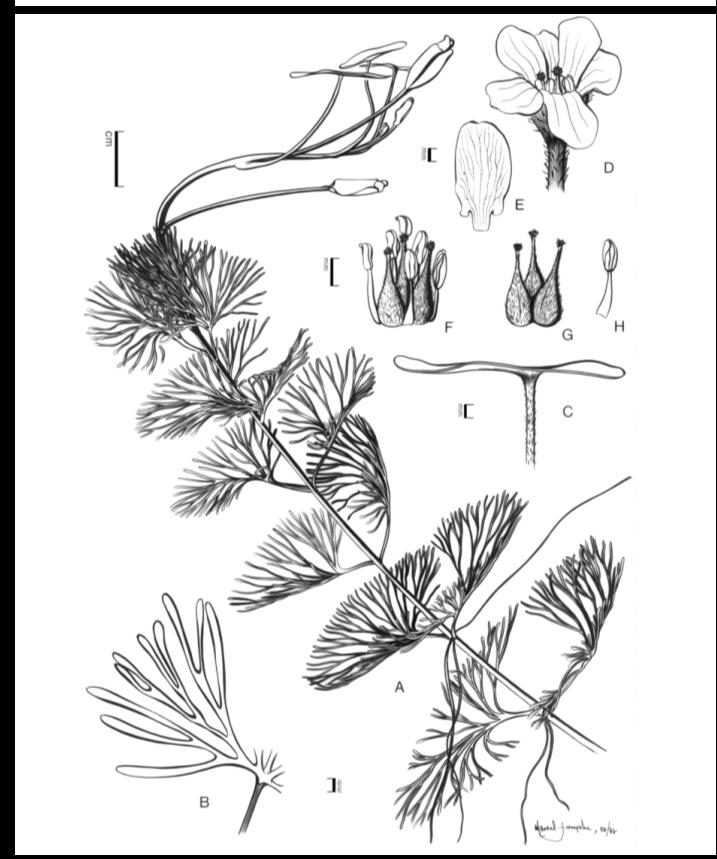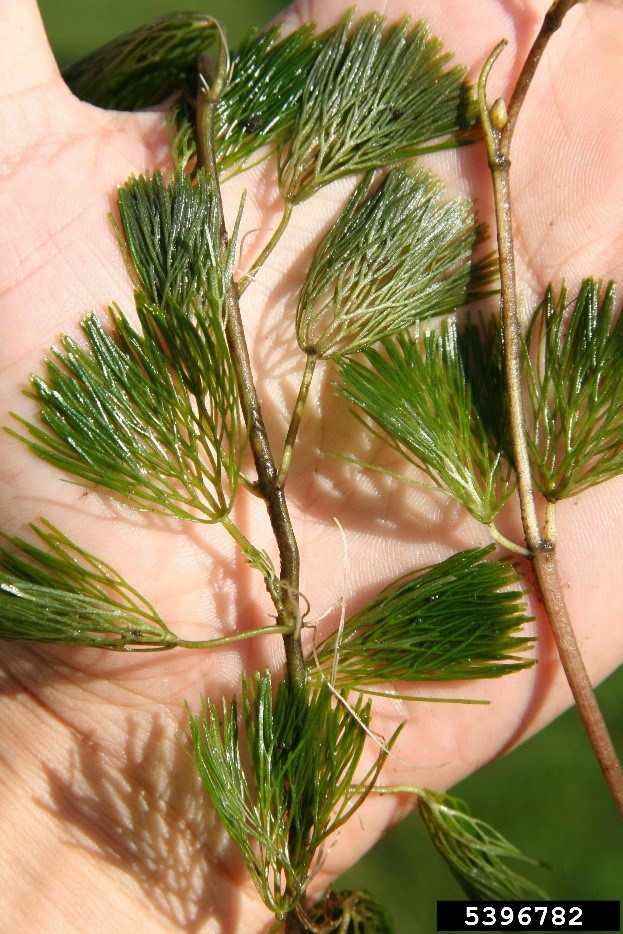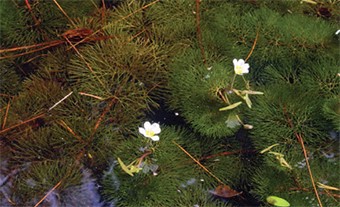Carolina fanwort
Learn about Carolina fanwort and how you can help prevent the introduction and spread of this aquatic invasive plant.
What Ontario is doing
To prevent the further spread of this unwanted invader in the province, Ontario has regulated Carolina fanwort (Cabomba caroliniana) as a restricted invasive species under the Invasive Species Act, 2015.
Learn about the Invasive Species Act and regulations.
Background
Carolina fanwort is an aquatic plant with fan-shaped leaves that grows below the water’s surface. Commonly used names for this species include
- Cabomba
- Carolina water-shield
- purple fanwort
- fish grass
This plant can grow in depths ranging from 30 cm to 10 m. Carolina fanwort prefer high levels of light and still or slow-moving waters but can also tolerate low levels of light, turbid (murky) water and a range of climates.
This plantprefers acidic water, making acidic lakes on the Canada Shield especially susceptible.
Carolina fanwort can spread to new waterbodies through:
- the natural movement of plant fragments
- attached to watercraft
- through the improper disposal of water garden or aquarium contents
Range
Native to South America and southeastern United States, Carolina fanwort has been introduced globally in places like:
- Canada
- Europe
- Southeast Asia
- Australia
- northern parts of the U.S.
The Canadian distribution is limited to Ontario, specifically northeast of Peterborough, Ontario, in the Kasshabog Lake and Crowe River/North River watershed.
View an up-to-date distribution map of fanwort in North America.
Impacts of Carolina fanwort
Carolina fanwort can produce dense mats of floating vegetation and crowd out native plant species and reduce light available for submerged aquatic plants. Large areas of these plants may die and decompose in the fall, reducing the water’s oxygen levels and impacting aquatic life.
Dense mats can clog drainage canals and irrigation systems, potentially damaging crops and can interfere with recreational activities such as boating and swimming.
How to identify Carolina fanwort
Carolina fanwort is a submerged plant that roots on the bottom of lakes and rivers.
Under the water, pairs of finely divided fan-shaped leaves grow on opposite sides of the main stem, creating a feathery effect. The plant also has small, floating oblong leaves up to three centimetres long.
This plant flowers from late spring to early fall. The flowers usually rise above the surface of the water. They are 0.6 to 1.5 centimetres wide and white to pale yellow, sometimes with a purple or pink tinge.
Fanwort looks like other aquatic plants, including:
- bladderwort (Utricularia vulgaris)
- white-water crowfoot (Ranunculus aquatilis)
- northern water-milfoil (Myriophyllum sibiricum)
- water marigold (Megalodonta beckii)
- coontail (Ceratophyllum demersum)
Fanwort has opposite, finely divided, fan-shaped leaves on distinct stems.
What you need to know
- Learn how to identify Carolina fanwort and prevent the introduction or spread of this plant through Ontario’s waterways.
- It is illegal to transport, deposit, release or bring Carolina fanwort into a provincial park or conservation reserve in Ontario.
- It is illegal to buy, sell, lease or trade Carolina fanwort or grow/keep, such as use in aquariums or outdoor gardens in Ontario.
- Always clean, drain and dry your watercraft (boat, canoe, etc.) if removing it and transporting it to another waterbody.
- As of January 1, 2022, boaters must open or remove drain plugs and other devices to allow water to drain, and take reasonable measures to remove plants, animals and algae from their watercraft, watercraft equipment and trailer before transporting it overland.
- In addition, boaters must ensure watercraft, watercraft equipment and trailers do not have aquatic plants, animals, or algae attached to it before arriving at a launch site or placing the watercraft into any waterbody.
Reporting illegal activity
If you have any information about the illegal importation, distribution, or sale of Carolina fanwort, report it immediately to the ministry at
- contact the toll-free Invading Species Hotline at
1-800-563-7711 - visit EDDMapS Ontario
- search for the ‘Invasive Species in Ontario’ project on iNaturalist.org to report a sighting
Gallery
Morphology of C. caroliniana. A. Upper part of whole plant; B. Detail of submersed leaf segments; C. Lateral view of floating leaf; D. Flower; E. Petal; F. Sexual parts of the flower; G. Pistils; H. Stamen (Wilson et al, 2007)
Fanwort stem and leaves. Photo: Robert Vidéki, Doronicum Kft., Bugwood.org
Fanwort flower and floating and submerged leaves. Photo: Sam Brinker, MNR


